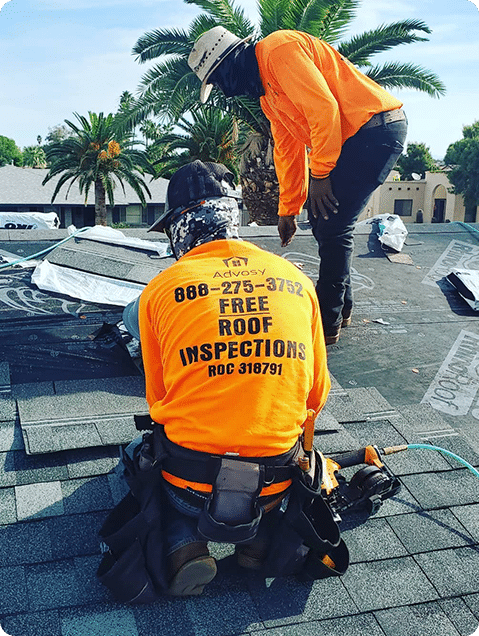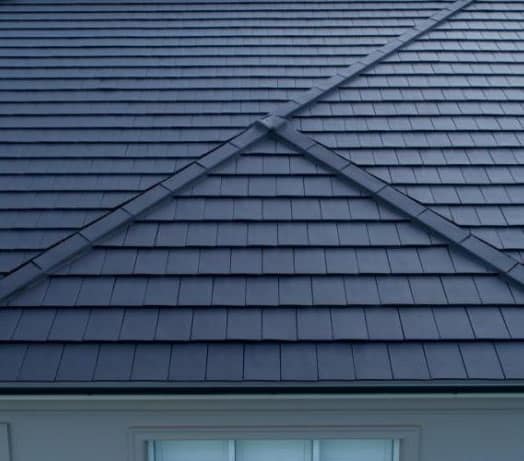Insulation is an important component of a home’s roofing system. It helps to regulate the temperature inside the house and also reduces energy costs by maintaining comfortable temperatures year-round.
Understanding different types of insulation, their benefits, and how they are installed can help homeowners make informed decisions about which type of insulation best suits their needs.
This article will provide an overview of the various types of insulation available for roofs as well as discuss their advantages and disadvantages.
By thoroughly considering each option before making a decision, it is possible to choose the most suitable form of insulation for one’s home.
Fiberglass Insulation
Fiberglass insulation is a popular choice for many homeowners due to its versatility and affordability.
It typically comes in rolls or batts of fiberglass material, with the latter having an adhesive backing that helps it adhere to walls and ceilings.
This type of insulation is effective at blocking out cold air from entering through cracks or gaps between building materials, as well as providing soundproofing capabilities.
Fiberglass insulation can also help regulate temperature by keeping warm air inside during colder months and cool air inside during hotter months.
The installation process for fiberglass insulation is relatively straightforward and requires minimal effort on the part of the homeowner.
However, it is important to wear appropriate clothing since fiberglass particles can be irritating to skin and eyes.
Additionally, proper ventilation should be considered when installing this type of insulation, such as opening windows, using fans, or running an exhaust fan while cutting pieces of insulation roll into place.

With these precautions taken into account, fiberglass insulation can provide excellent energy efficiency benefits as well as improved comfort levels throughout your home’s interior space.
Cellulose Insulation
Cellulose insulation is a popular option for roofing due to its ability to reduce air infiltration and provide superior soundproofing. It works by trapping air within the small, fluffy fibers of recycled paper products such as newspapers or cardboard boxes. The material is treated with fire retardants, insecticides, and fungicides that make it resistant to heat loss and infestations.
Unlike fiberglass insulation which needs professional installation, cellulose can be installed easily on any flat surface either above or below the existing layer of roof decking.
In terms of energy efficiency, cellulose outperforms other types of insulation in terms of thermal resistance. Studies have found that when properly sealed against moisture, it can achieve an R-value up to 3 times higher than that of fiberglass or spray foam insulation.
Cellulose also absorbs sound better than other materials since its density helps block out noise from outside sources like traffic and neighbors. Additionally, it is more environmentally friendly because it uses recycled materials instead of new ones and does not contain potentially harmful chemicals like some other forms do.
Ultimately, cellulose provides homeowners with an effective solution for their roof insulation needs at a reasonable cost.
Spray Foam Insulation
Spray foam insulation is an effective and efficient way to insulate the roof of your home. The application process involves spraying a polyurethane or similar material onto the surface, which then hardens into place after drying.
This type of insulation provides superior thermal protection, as well as improved air sealing capabilities compared to more traditional methods. It also offers superior resistance against water damage and mold growth, making it ideal for homes in humid climates. Furthermore, spray foam insulation has minimal shrinkage over time and can be used on roofs with complex shapes.
The installation process for spray foam insulation requires specialized equipment, so it is best to hire a professional when installing this product. However, once installed properly it will improve energy efficiency significantly while providing excellent soundproofing qualities that reduce noise from outside sources such as traffic or wildlife.
In addition, its ability to block moisture helps prevent condensation buildup within the attic space. Ultimately, homeowners may find that choosing spray foam insulation not only improves their home’s comfort level but also increases its value long-term.
Radiant Barrier Insulation
Radiant barrier insulation is a type of reflective insulation that can be installed in the roof, walls and floors of a home.
It consists of highly reflective material designed to reflect radiant heat away from the living space.
This form of insulation works best when there is an air gap between it and the interior surface being insulated.
The most common types of radiant barriers are those made from thin aluminum foil or plastic sheeting with embedded bubbles or beads, which trap air to create an effective thermal barrier.
In order for these materials to work optimally, they must have direct contact with an unvented attic space.
If this is not possible, then other means such as installing additional layers of insulation should be employed.
Radiant barriers also require proper installation techniques; otherwise their efficiency will be compromised and energy savings may be minimal.
Although more expensive than traditional forms of insulation, radiant barriers offer significant benefits over conventional methods by reducing cooling costs during hot weather months and helping protect against extreme temperatures indoors during winter months.
Mineral Wool Insulation
Mineral wool insulation is a type of thermal and acoustic material made from melting various minerals together. It has an excellent ability to withstand high temperatures, making it especially well-suited for roofing applications.
This form of insulation provides superior performance in terms of both its versatility and longevity, as well as its cost-effectiveness compared with other types of insulation materials. Mineral wool can be used in attics, walls, floors and around pipes or ducts to provide improved energy efficiency and sound absorption.
Compared to traditional forms of insulation such as fiberglass or cellulose, mineral wool offers higher levels of fire resistance and moisture control. Its naturally occurring properties make it extremely durable, allowing the material to last up to twice as long while still maintaining its insulating power.
Additionally, this type of insulation does not require additional chemical treatments like some other products may need; it is already naturally flame retardant which helps reduce potential health risks for occupants living in the home.
Polyurethane Foam Insulation
Moving on from mineral wool insulation, polyurethane foam insulation is another popular choice for roofing.
Polyurethane foam has a high R-value and can be sprayed onto any surface evenly and quickly.
Unlike other types of insulation, it also acts as an air barrier; reducing the amount of energy lost through diffusion or convection.
As such, polyurethane foam is often used in combination with other forms of insulation to create an effective system that meets the highest standards of energy efficiency.
Polyurethane foam also provides excellent soundproofing properties, making it ideal for homes located near busy roads or airports.
Furthermore, this type of insulation has superior fire resistance compared to traditional methods like fiberglass batts or cellulose blankets.
Although more expensive than some options, its durability and longevity make it well worth the investment for any homeowner looking for reliable protection against extreme weather conditions.

Structural Insulated Panels
Structural Insulated Panels (SIPs) are a form of insulation that provides structural support for roofs. They consist of two panels of either oriented strand board or plywood attached to an insulated core made from foam, such as expanded polystyrene, extruded polystyrene, phenolic-infused resin boards, and/or cork.
These components work together to create a strong yet lightweight panel that provides excellent thermal performance with minimal air leakage. The use of SIPs can greatly reduce heating costs while providing superior energy efficiency compared to traditional construction methods.
The increased strength and reduced thickness of the panels also allow them to be installed faster than most other forms of insulation, saving time and money on labor. Additionally, they are extremely durable over long periods of time, ensuring their effectiveness will not diminish in years to come.
Overall, SIPs offer homeowners a cost-effective way to achieve higher levels of energy efficiency without needing extensive remodeling or replacement projects.
Conclusion
Insulating a roof is an important step in creating a comfortable and energy-efficient home. The type of insulation used can make the difference between a successful project and one that ultimately fails to reach its goals.
Different types of insulation, including fiberglass, cellulose, spray foam, radiant barrier, mineral wool, polyurethane foam, and structural insulated panels all offer unique advantages which should be considered when making choices for your own home’s roofing needs.
Ultimately, careful consideration must be given to each with regard to cost-effectiveness as well as achieving the desired level of comfort and efficiency within the space. Taking these factors into account can help ensure that your choice will be the best possible option for you and your family.


